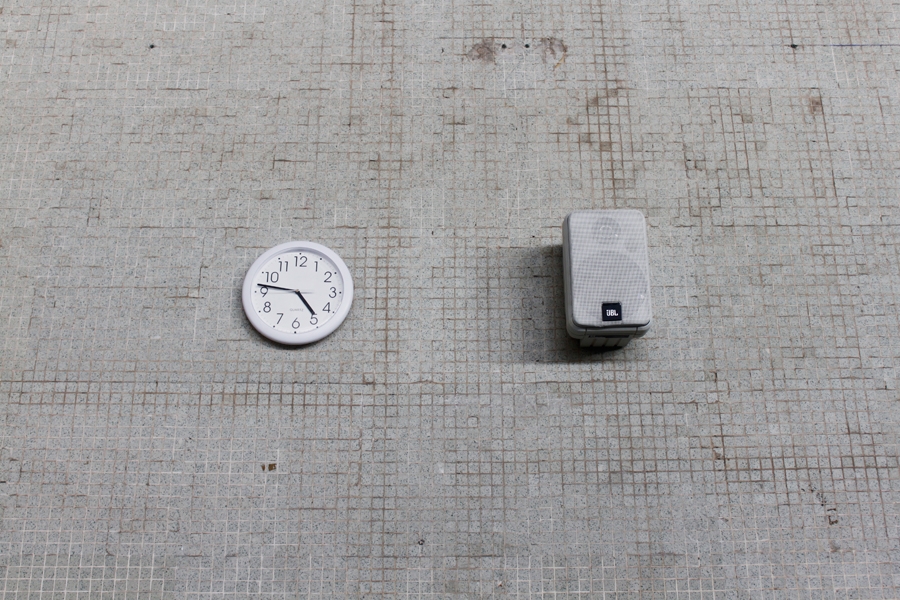The ‘(around)’ of sound art inevitably points to context: that against which sound reverberates in order to take shape. Thus, what emerges from Voices/Landscapes (for the eye and ear) is a deep resonance with the local context, but one with an ‘(around)ness’ that cannot be conceptually reducible. Rather, it echoes as a range of hearing and an aural landscape, and as part of the (Around) Sound Art Festival that journeyed from Kyoto to Hong Kong in the summer of 2014, Voices/ Landscapes makes a beautiful fermata to a score involving film screenings, listening exchanges and a sound workshop/retreat.
Hosted by the quiet but well-respected organisation Soundpocket, dedicated to ‘aesthetically meaningful, culturally-grounded and publicly relevant sonic practices’, Voices/ Landscapes took place on the Kwun Tong ferry pier in West Kowloon, with video screenings hosted at a venue near the other end of the ferry route on Hong Kong island. The ferry is a nostalgic remainder of Hong Kong’s history; it is a slow route from Kowloon Peninsula to Hong Kong Island and back, less and less affordable in Hong Kong terms – because time is money, of course. But here, far away from the noise of Hong Kong’s known business and tourist centres, the exhibition is visually quiet – a bare concrete structure jutting out from another bit of reclaimed land, where for a mere HK$5 (£0.40), one is able to see another side of the city, enjoy a sea-salted sunset and experience a leisurely boatride from one skyline to another. In the open spaces of the Kwun Tong ferry pier, curator Carlo Fossati remained loyal to the ‘(around)ness’ of the festival, leaving plenty of space to take in four works, at the same time igniting the sense of curiosity that emerges from exploring a nontraditional art space that finds itself intervened with and interrupted by art. Not ironically, the most straightforward of the four pieces, a video projection by Phill Niblock, works the least well in the space. But this is also a likely reason why the other video pieces in the exhibition were given a dedicated screening at Connecting Space a few days later.
At the other end of the pier, one large storage space filled with the material detritus of previous occupants (a supermarket was once located here, as well as a biennial) becomes another nostalgic environment for the installation by Michael Graeve, whose second-hand electronics (record players, speakers and old amplifiers) blend seamlessly with the dust of storage. The click and hum of antiquated ‘mechanical stress’ seems to make the dust dance in this still disco. Moving forward to the open-air part of the pier, the landscape features a bored middle-aged ferry attendant who, with his knee propped on an unwieldy chair, listlessly stares past the few commuters who pass through the turnstile. A clock hangs on the wall, part of a site-specific installation by Paolo Piscitelli, and depending upon your nature, you are reminded either of the methodic ticking of commuter time, the time to get off work, the time to catch the boat – or perhaps something slower, like the quizzical wonder of a clock marking real time as art piece. Next to the clock hangs a speaker, and a few garbled, unintelligible sounds revealed as recordings from the artist’s studio in 2008 tell us that this way of counting time is actually about experiencing time, not deadlines.
Walking ‘(around)’ sound, we move further into the waves gently slapping against the pier and a landscape shaded pink-lemonade from the sunset outside. Tetsuya Umeda has created a site-specific performance and installation using an apocalyptic-looking series of DIY rigs with an industrial water tank, plastic tubing, gallon-size Ovaltine tins and gas burners. There is no apparent logic to the arrangement, but its careful precision, like Umeda’s deliberate movements throughout the space, lends a ceremonious seriousness to the salty air. Hollow drones emerge to envelop the entire space, and the mysterious physics creates an (around)ness that allows viewers consecutively to submit to the ritual and extend to the beyond of a passing seagull’s cry, the departing ferry horn – and if we think about it, the not-so-distant shouts of students filling the grounds of Hong Kong’s legislative headquarters. It is the first day of occupation in the Admiralty district, not too far from where the Kwun Tong ferry docks on the island side.
Though there is no direct link of the sound festival to current political events, it is exactly a certain politics of listening that has become so crucial to Hong Kong at this time. To be able to speak and listen to an (around) insinuates a degree of silence necessary for opinions to be voiced and heard. And perhaps Voices/Landscapes has inadvertently become the calm before a great storm, but it is one with a great deal to offer in the way of thinking through the noise of material and human presence. It is relevant, therefore, to engage Voices/Landscapes (for the eye and ear) not as an exhibition in and of itself, but as part of a sensorium enabled by attentiveness to context, where, as Soundpocket director Yeung Yang notes, such presence is a gesture, a ‘reaching out to multiple pockets of the city left open or closed by choice or exigency’.
This article was first published in the Spring 2015 issue of ArtReview Asia.
